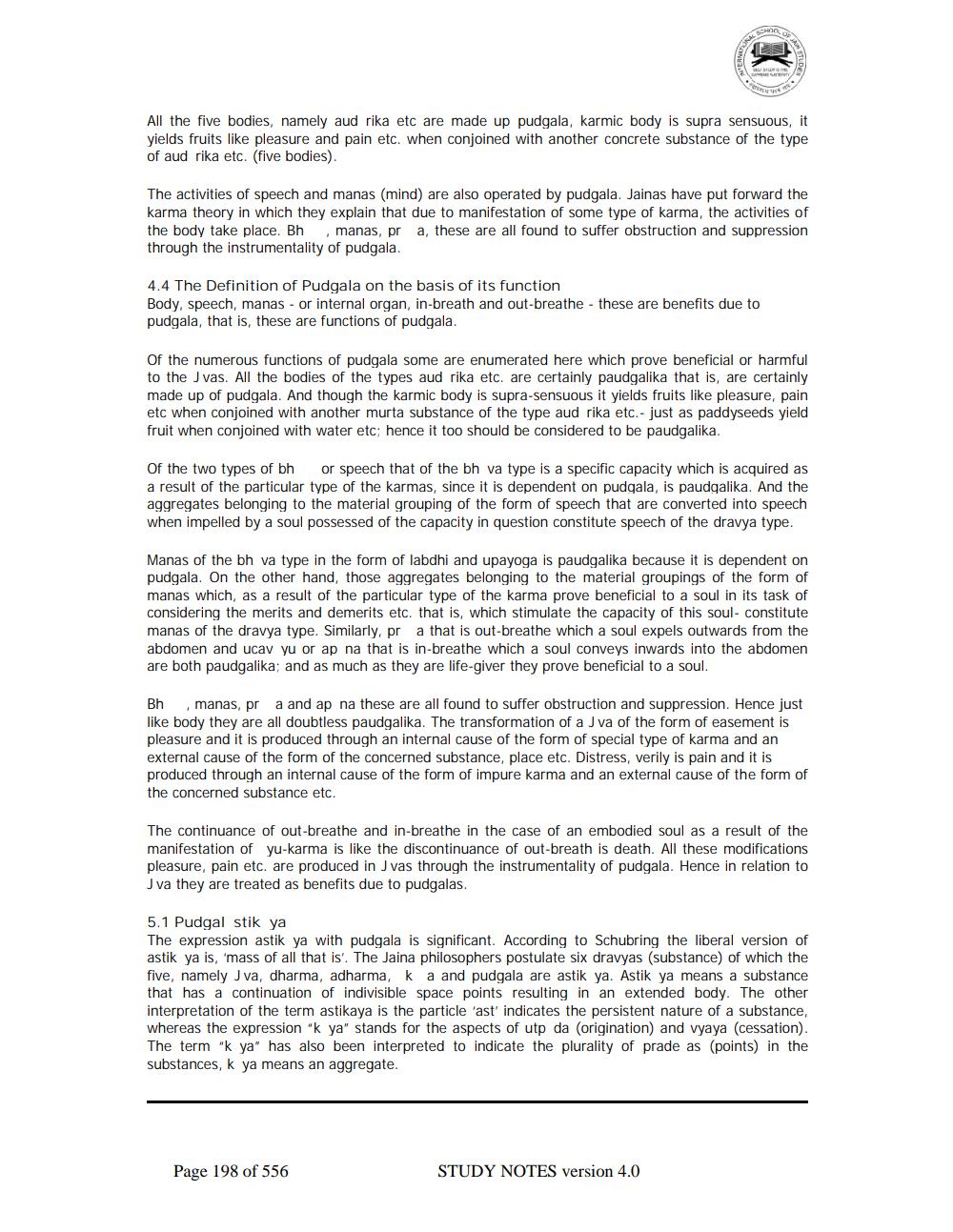________________
All the five bodies, namely aud rika etc are made up pudgala, karmic body is supra sensuous, it yields fruits like pleasure and pain etc. when conjoined with another concrete substance of the type of aud rika etc. (five bodies).
The activities of speech and manas (mind) are also operated by pudgala. Jainas have put forward the karma theory in which they explain that due to manifestation of some type of karma, the activities of the body take place. Bh, manas, pr a, these are all found to suffer obstruction and suppression through the instrumentality of pudgala.
4.4 The Definition of Pudgala on the basis of its function
Body, speech, manas - or internal organ, in-breath and out-breathe - these are benefits due to pudgala, that is, these are functions of pudgala.
Of the numerous functions of pudgala some are enumerated here which prove beneficial or harmful to the Jvas. All the bodies of the types aud rika etc. are certainly paudgalika that is, are certainly made up of pudgala. And though the karmic body is supra-sensuous it yields fruits like pleasure, pain etc when conjoined with another murta substance of the type aud rika etc.- just as paddyseeds yield fruit when conjoined with water etc; hence it too should be considered to be paudgalika.
Of the two types of bh or speech that of the bh va type is a specific capacity which is acquired as a result of the particular type of the karmas, since it is dependent on pudgala, is paudgalika. And the aggregates belonging to the material grouping of the form of speech that are converted into speech when impelled by a soul possessed of the capacity in question constitute speech of the dravya type.
Manas of the bh va type in the form of labdhi and upayoga is paudgalika because it is dependent on pudgala. On the other hand, those aggregates belonging to the material groupings of the form of manas which, as a result of the particular type of the karma prove beneficial to a soul in its task of considering the merits and demerits etc. that is, which stimulate the capacity of this soul- constitute manas of the dravya type. Similarly, pr a that is out-breathe which a soul expels outwards from the abdomen and ucav yu or ap na that is in-breathe which a soul conveys inwards into the abdomen are both paudgalika; and as much as they are life-giver they prove beneficial to a soul.
Bh, manas, pr a and ap na these are all found to suffer obstruction and suppression. Hence just like body they are all doubtless paudgalika. The transformation of a Jva of the form of easement is pleasure and it is produced through an internal cause of the form of special type of karma and an external cause of the form of the concerned substance, place etc. Distress, verily is pain and it is produced through an internal cause of the form of impure karma and an external cause of the form of the concerned substance etc.
The continuance of out-breathe and in-breathe in the case of an embodied soul as a result of the manifestation of yu-karma is like the discontinuance of out-breath is death. All these modifications pleasure, pain etc. are produced in J vas through the instrumentality of pudgala. Hence in relation to J va they are treated as benefits due to pudgalas.
5.1 Pudgal stik ya
The expression astik ya with pudgala is significant. According to Schubring the liberal version of astik ya is, 'mass of all that is'. The Jaina philosophers postulate six dravyas (substance) of which the five, namely Jva, dharma, adharma, k a and pudgala are astik ya. Astik ya means a substance that has a continuation of indivisible space points resulting in an extended body. The other interpretation of the term astikaya is the particle 'ast' indicates the persistent nature of a substance, whereas the expression "k ya" stands for the aspects of utp da (origination) and vyaya (cessation). The term "k ya" has also been interpreted to indicate the plurality of prade as (points) in the substances, k ya means an aggregate.
Page 198 of 556
STUDY NOTES version 4.0




